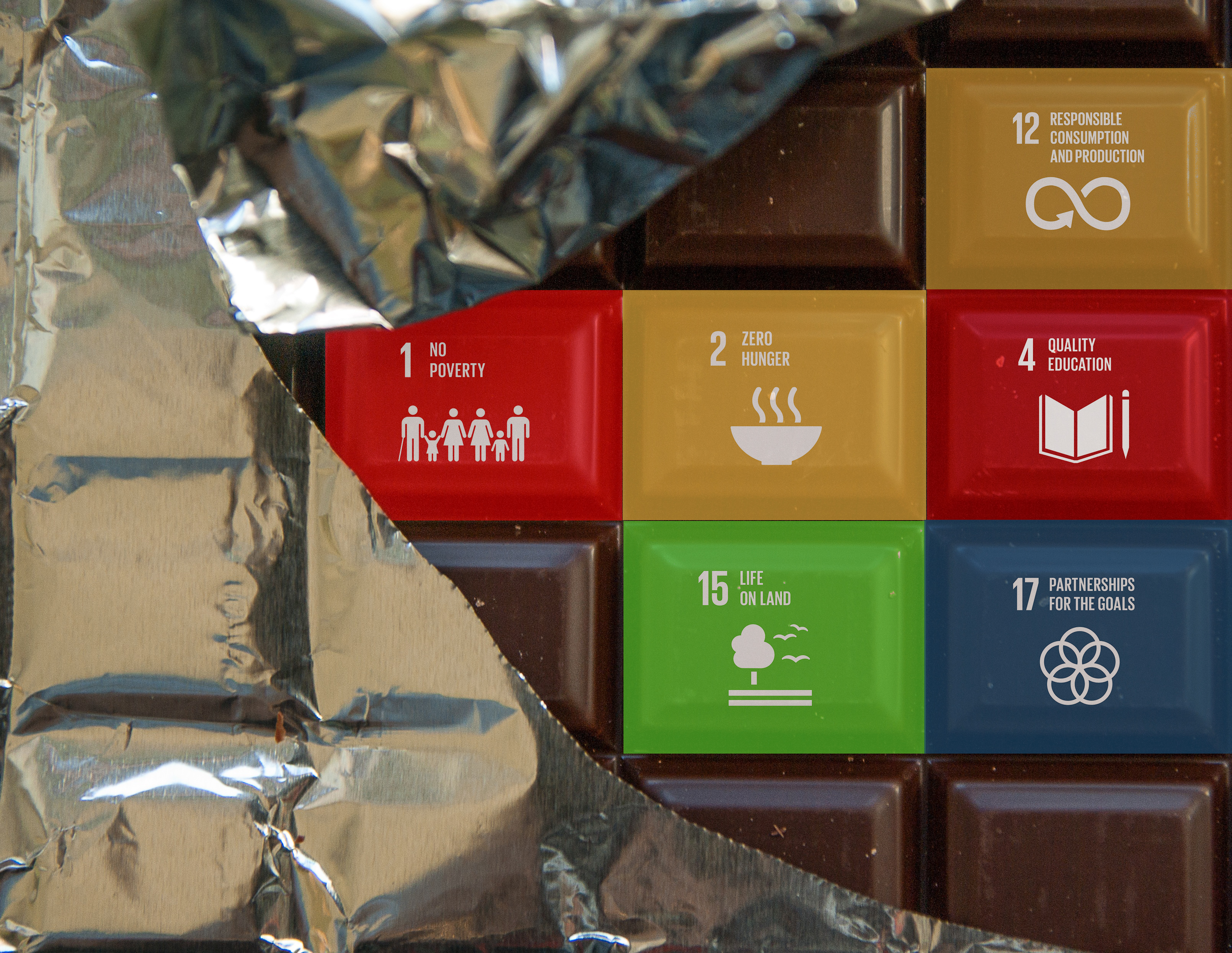 “The Sustainable Development Goals (SDGs), otherwise known as the Global Goals, are a universal call to action to end poverty, protect the planet and ensure that all people enjoy peace and prosperity.”1
“The Sustainable Development Goals (SDGs), otherwise known as the Global Goals, are a universal call to action to end poverty, protect the planet and ensure that all people enjoy peace and prosperity.”1
Should we prioritise chocolate in this universal call to action?
Threats to the cocoa industry including low productivity, marketing challenges, pests and disease, environmental concerns and access to education, pests and disease, environmental concerns and educational access, are predicted to cause a global supply shortage of 1 million tonnes by 2020.
Without understanding something of the lives and livelihoods producing this dietary indulgence you’d consider this issue a first world problem – so what? I’ll just have to skip that mid-afternoon choccy pick-me-up. No big deal.
Think again. In an industry where almost 90% of cocoa bean growers are smallholder farmers – 865,000 in Ghana alone – the production and trade of chocolate’s key raw ingredient is vital for local economies across tropical regions. Cocoa farming has a crucial part to play in reducing poverty and increasing economic prosperity globally. It’s hard to imagine achieving the SDGs without considering chocolate.
CABI is using its expertise in scientific research to identify and address some of these issues to help secure a sustainable cocoa future.
Dr Harry Evans, Emeritus Fellow has dedicated over 30 years of his CABI career to understanding Frosty pod rot, a fungal disease responsible for decimating cocoa production across South and Central America. His research, summarised in a recently published paper, recommends a set of integrated disease management techniques to stem the spread of Frosty pod rot and improve yields.
In Southeast Asia cocoa is also important to rural farming incomes and country trade flows. In this region CABI and partners’ are running the CocoaSafe project, ensuring the production and trade in cocoa meets food safety standards on the use of pesticides and other harmful substances.
The cocoa value chain is a long and complex one from growers to consumers (see video below). Building and developing knowledge on this value chain is vital for cocoa farmers, agro-dealers, processors and traders to maximise the quality and quantity of cocoa that goes to market.
A value chain is only as strong as its weakest link. Unless all parts of the chain respond to the challenges facing chocolate production the weakest link may become smallholder cocoa farmers.
With an estimated 14 million smallholder cocoa farmers globally, these rural communities often depend on cocoa’s high market value as a main source of income. It’s not hard to imagine how a crisis in cocoa production will lead to a crisis in livelihood security for millions of families.
Although the SDGs were not created explicitly to keep our shelves stocked with chocolate creations, they set out a vision for a poverty free, environmentally sustainable and prosperous world. Chocolate has its part to play in helping us to realise this.
To understand the process from bean to bar, watch this excellent video by the Standards and Trade Development Facility (STDF) on the cocoa value chain:
[youtube https://www.youtube.com/watch?v=5UAnYcqQTR4]
The authors views and opinions are their own and do not necessarily reflect those held by CABI.
1 SDG definition taken from UNDP
